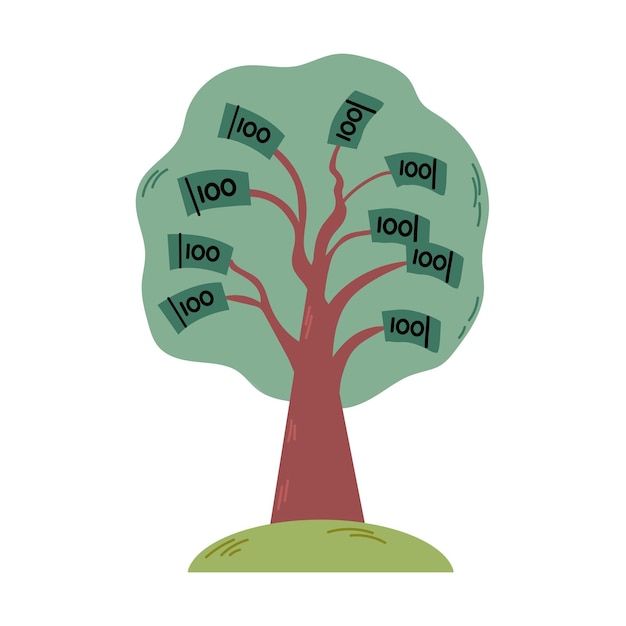Financial Planning for Self-Employed: Maximize Savings in 2025

Financial planning for self-employed individuals in 2025 involves strategic tax deductions, retirement savings plans like Solo 401(k)s and SEP IRAs, health savings accounts, and diligent expense tracking to optimize financial well-being and minimize tax liabilities.
Financial planning for self-employed individuals in 2025 presents unique challenges and opportunities. Navigating the complexities of self-employment requires strategic thinking to maximize deductions and savings effectively.
Understanding the Self-Employed Financial Landscape
The world of self-employment offers flexibility and independence but demands a proactive approach to financial planning. Understanding the nuances of this financial landscape is essential for success.
Unlike traditional employees, self-employed individuals are responsible for managing their own taxes, retirement savings, and healthcare. This requires a comprehensive understanding of available deductions and savings strategies.
The Importance of Proactive Financial Planning
Proactive financial planning is the cornerstone of financial stability for the self-employed. It ensures that you are not only meeting your current obligations but also securing your future financial well-being.
- Avoid Penalties: Stay compliant with tax laws to avoid costly penalties.
- Maximize Savings: Take advantage of all eligible deductions to reduce your tax burden.
- Secure Retirement: Plan for your retirement with appropriate savings strategies.
Key Challenges Faced by the Self-Employed
Several challenges can impact the financial stability of self-employed individuals. Recognizing and addressing these challenges is crucial for effective financial planning.
- Income Fluctuations: Manage unpredictable income streams effectively.
- Healthcare Costs: Navigate high healthcare expenses and insurance premiums.
- Tax Obligations: Understand and meet self-employment tax requirements.
- Retirement Planning: Take responsibility for your own retirement savings.

By understanding these challenges and adopting proactive financial planning strategies, self-employed individuals can navigate the complexities of their financial landscape and achieve long-term financial security. This involves diligent expense tracking, strategic tax planning, and making informed decisions about retirement and healthcare.
Maximizing Tax Deductions for the Self-Employed
One of the most effective ways self-employed individuals can improve their bottom line is by maximizing their tax deductions. Knowing which expenses are deductible can significantly reduce your tax liability.
Tax deductions are essential for reducing taxable income. Understanding and leveraging these deductions can result in significant financial savings. Be sure to keep meticulous records and receipts to support your claims.
Common Business Expense Deductions
Several business expenses are deductible, and careful record-keeping is essential for maximizing these deductions. Here are some examples:
- Home Office Deduction: Deduct expenses related to the business use of your home.
- Business Travel: Deduct costs associated with business-related travel.
- Business Meals: Deduct a portion of the costs of business-related meals.
Self-Employment Tax Deduction
Self-employment tax consists of Social Security and Medicare taxes. As a self-employed individual, you pay both the employer and employee portions of these taxes.
- Half of Self-Employment Tax: Deduct one-half of your self-employment tax from your gross income.
- Adjusted Gross Income (AGI): This deduction reduces your AGI, which can affect other deductions and credits.
Health Insurance Premiums Deduction
Self-employed individuals can deduct the amount they paid in health insurance premiums for themselves, their spouses, and their dependents.
- Eligibility: You must not be eligible to participate in an employer-sponsored health plan.
- Deduction Limit: Deduction cannot exceed your self-employment income.
Maximizing tax deductions requires diligent record-keeping, a thorough understanding of eligible expenses, and staying up-to-date with tax laws. This proactive approach can free up significant funds for reinvestment in your business or personal savings.
Smart Retirement Savings Strategies
Retirement planning is a critical aspect of financial planning for self-employed individuals. Unlike traditional employees, you are responsible for funding your own retirement.
Several retirement savings options are available to self-employed individuals, each with its own benefits and considerations. Understanding these options can help you choose the best strategy for your needs.
Solo 401(k) Plans
A Solo 401(k) plan allows self-employed individuals to contribute both as an employee and as an employer, offering significant savings potential.
- Contribution Limits: Higher contribution limits compared to other retirement plans.
- Dual Role: Contribute as both the employee and the employer.
SEP IRA (Simplified Employee Pension)
A SEP IRA is a retirement plan that allows self-employed individuals to contribute a percentage of their net self-employment income.
- Contribution Flexibility: Allows contributions up to 20% of your net self-employment income.
- Easy Setup: Simple to set up and administer compared to other retirement plans.
SIMPLE IRA (Savings Incentive Match Plan for Employees)
A SIMPLE IRA is another retirement savings option that allows self-employed individuals to make contributions, with the option for employer matching.
- Matching Contributions: You can elect to make matching contributions.
- Contribution Limits: Lower contribution limits than Solo 401(k) plans.

Choosing the right retirement savings strategy depends on your individual circumstances, income level, and savings goals. A Solo 401(k) generally offers higher contribution limits, while SEP and SIMPLE IRAs provide simplicity and flexibility. Consulting with a financial advisor can help you determine the most suitable plan.
Health Savings Accounts (HSAs)
Health Savings Accounts (HSAs) are another valuable tool for self-employed individuals. HSAs offer a tax-advantaged way to save for healthcare expenses.
HSAs provide a triple tax benefit: contributions are tax-deductible, earnings grow tax-free, and withdrawals for qualified medical expenses are tax-free. This makes HSAs an attractive option for managing healthcare costs.
Eligibility for an HSA
To be eligible for an HSA, you must be enrolled in a high-deductible health plan (HDHP).
- HDHP Requirements: Ensure your health plan meets the IRS definition of an HDHP.
- No Other Coverage: You generally cannot be covered by other health insurance.
Benefits of an HSA
HSAs offer several benefits for self-employed individuals:
- Tax Deductions: Contributions are tax-deductible, reducing your taxable income.
- Tax-Free Growth: Earnings grow tax-free, allowing your savings to accumulate faster.
- Tax-Free Withdrawals: Withdrawals for qualified medical expenses are tax-free.
Using HSA Funds
HSA funds can be used to pay for a wide range of qualified medical expenses, including:
- Doctor Visits: Pay for doctor visits and medical consultations.
- Prescriptions: Cover the cost of prescription medications.
- Dental and Vision Care: Use funds for dental and vision expenses.
HSAs provide a strategic way to save for healthcare expenses while enjoying tax advantages. By combining an HDHP with an HSA, self-employed individuals can effectively manage their healthcare costs and reduce their overall tax burden. This dual approach supports both immediate healthcare needs and long-term financial security.
Effective Expense Tracking and Budgeting
Effective expense tracking and budgeting are essential for sound financial planning. They provide a clear picture of your income and expenses, enabling you to make informed financial decisions.
Accurate expense tracking helps you identify deductible expenses, manage cash flow, and make informed decisions about business investments. Budgeting ensures that you are living within your means and saving for future goals.
Tools for Expense Tracking
Several tools are available to help self-employed individuals track their expenses effectively:
- Spreadsheets: Use Excel or Google Sheets to manually track income and expenses.
- Accounting Software: Utilize software like QuickBooks Self-Employed or FreshBooks.
Creating a Budget
Creating a budget involves categorizing income and expenses and setting financial goals:
- Categorize Expenses: Divide expenses into fixed, variable, and discretionary categories.
- Set Financial Goals: Determine short-term and long-term financial goals.
Reviewing and Adjusting Your Budget
Regularly review and adjust your budget to ensure it aligns with your financial goals and reflects changes in your income and expenses:
- Monthly Review: Review your budget monthly to identify areas for improvement.
- Adjust as Needed: Adjust your budget based on changes in income and expenses.
Effective expense tracking and budgeting are fundamental to financial stability. By leveraging available tools and regularly reviewing your budget, you can gain better control over your finances, identify deduction opportunities, and make progress toward your financial goals. This proactive approach supports both business growth and personal financial security.
Seeking Professional Financial Advice
While self-employed individuals can manage their finances independently, seeking professional financial advice can provide valuable insights and guidance.
A financial advisor can offer tailored advice based on your specific circumstances, goals, and risk tolerance. This expertise can help you make informed decisions about investments, retirement planning, and tax optimization.
Benefits of Working with a Financial Advisor
Working with a financial advisor offers several benefits:
- Expert Guidance: Receive expert advice on financial planning strategies.
- Personalized Plans: Develop a personalized financial plan tailored to your needs.
Choosing the Right Financial Advisor
Selecting the right financial advisor is crucial:
- Credentials: Look for advisors with relevant certifications, such as Certified Financial Planner (CFP).
- Experience: Choose an advisor with experience working with self-employed individuals.
Cost of Financial Advice
Financial advisors may charge fees based on:
- Assets Under Management (AUM): A percentage of the assets they manage for you.
- Hourly Rate: An hourly fee for their services.
Seeking professional financial advice can be a valuable investment in your financial future. A qualified advisor can help you navigate the complexities of self-employment finances, optimize your tax strategy, plan for retirement, and achieve your financial goals. The cost of advice should be weighed against the potential benefits of improved financial outcomes and long-term security. Consider consulting with multiple advisors to find one who aligns with your needs and values.
| Key Point | Brief Description |
|---|---|
| 📝 Track Expenses | Keep detailed records for tax deductions and budget management. |
| 💰 Retirement Plans | Explore Solo 401(k), SEP IRA, and SIMPLE IRA options for retirement savings. |
| ⚕️ Health Savings Account | Use an HSA with a high-deductible health plan for tax-advantaged healthcare savings. |
| 👨💼 Professional Advice | Consult a financial advisor for personalized guidance and strategic planning. |
Frequently Asked Questions
▼
The home office deduction allows you to deduct expenses related to the business use of your home, provided that the space is exclusively and regularly used for business purposes.
▼
A Solo 401(k) offers higher contribution limits compared to other retirement plans, allowing self-employed individuals to save more for retirement with both employee and employer contributions.
▼
An HSA provides a triple tax benefit: contributions are tax-deductible, earnings grow tax-free, and withdrawals for qualified medical expenses are tax-free, making it a tax-efficient way to save for healthcare.
▼
Self-employment tax includes Social Security and Medicare taxes. Self-employed individuals can deduct one-half of their self-employment tax from their gross income, reducing their adjusted gross income (AGI).
▼
Expense tracking is essential for identifying deductible expenses, managing cash flow, and making informed decisions about business investments, helping self-employed individuals optimize their finances.
Conclusion
Financial planning for self-employed individuals in 2025 requires a proactive and strategic approach. By maximizing tax deductions, implementing smart retirement savings strategies, leveraging Health Savings Accounts, and practicing effective expense tracking and budgeting, self-employed individuals can achieve financial stability and long-term success. Seeking professional advice can provide additional support and guidance in navigating the complexities of self-employment finances.





